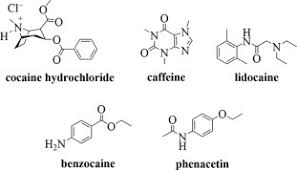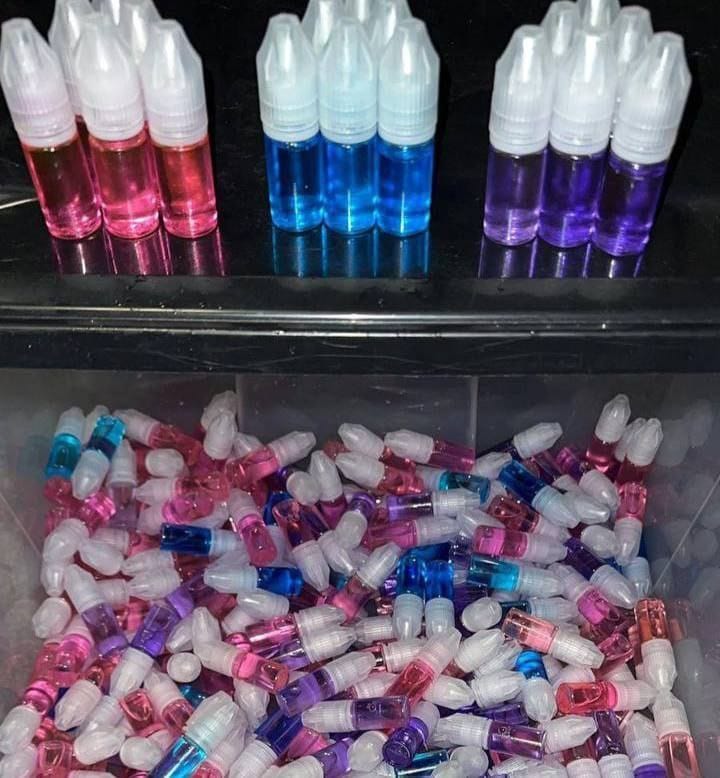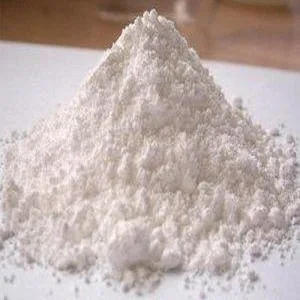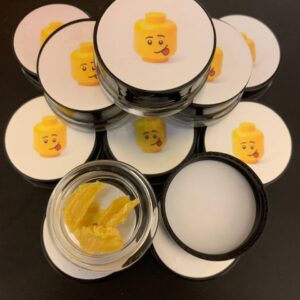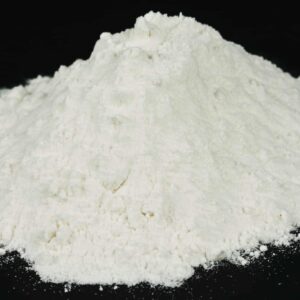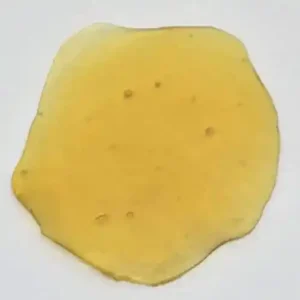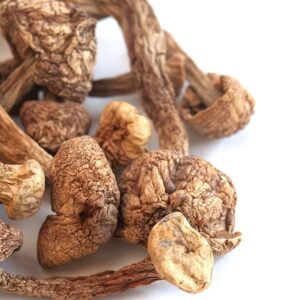Cocaine Hydrochloride Uncovered: 10 Surprising Facts You Didn’t Know When you hear the word “cocaine,” what comes to mind? Perhaps it’s the dark underbelly of crime dramas, or maybe it’s sensationalized headlines that paint a picture of danger and decadence. But there’s more to this notorious substance than meets the eye. Cocaine hydrochloride—a chemical form of one of nature’s most controversial plants—has a rich history and complex role in both medicine and society. In this post, we’ll peel back the layers on cocaine hydrochloride and reveal ten surprising facts that will challenge your perceptions, spark curiosity, and perhaps even enlighten you about its multifaceted existence. Buckle up as we embark on an eye-opening journey through science, culture, and history!
Introduction to cocaine hydrochloride
Cocaine hydrochloride, a term that may conjure up images of flashing lights and high-stakes parties, is more than just a substance associated with glamour and excess. This powerful stimulant has a long history intertwined with both traditional medicine and the dark underbelly of addiction. As we peel back the layers surrounding cocaine hydrochloride, you might be surprised by what you discover. From its origins in ancient cultures to its modern implications as a controlled substance, understanding this compound can shed light on why it remains such an enigma today. Get ready to dive deep into ten surprising facts about cocaine hydrochloride that will challenge your perceptions and expand your knowledge about this complex drug.
History of cocaine and its extraction process/Cocaine Hydrochloride Uncovered: 10 Surprising Facts
Cocaine has a rich and complex history, dating back to ancient civilizations. Indigenous people in the Andes Mountains chewed coca leaves for their stimulant properties, using them in rituals and as a remedy for altitude sickness.
In the 19th century, European chemists began isolating cocaine from these leaves. The extraction process involves soaking coca leaves in solvents like alcohol or ether. This creates a concentrated form of the alkaloid found naturally within the plant.
By 1860, pure cocaine was first extracted by German chemist Albert Niemann. Its effects rapidly gained popularity across Europe and America, initially being used in tonics and even Coca-Cola.
As awareness grew about its addictive qualities, laws regulating cocaine’s use emerged throughout the early 20th century. The journey from sacred leaf to illicit substance highlights humanity’s evolving relationship with this powerful drug.
Understanding the chemical composition of cocaine hydrochloride
Cocaine hydrochloride is a powerful alkaloid derived from the coca plant. Its chemical formula is C17H21NO4·HCl, representing a complex structure that includes carbon, hydrogen, nitrogen, oxygen, and chlorine.
At its core lies a bicyclic structure known as tropane. This unique arrangement contributes to cocaine’s potency and effects on the human brain. The addition of hydrochloric acid transforms it into a stable salt form, which enhances its solubility in water.
This solubility allows for various methods of use—snorting or injecting being the most common. The hydrochloride form also plays a crucial role in how cocaine interacts with neurotransmitters like dopamine.
Understanding this composition helps demystify why cocaine produces such intense physical and psychological reactions. It’s not just about euphoria; it’s about how these molecules interact within our bodies at an intricate level.
How is it used? (snorting, injecting, smoking)Cocaine Hydrochloride Uncovered: 10 Surprising Facts
Cocaine hydrochloride can be consumed in several ways, with each method influencing the intensity and duration of its effects.
One common approach is snorting. Users inhale the powdered form through the nose, allowing it to quickly enter the bloodstream via nasal membranes. This results in a rapid onset of euphoria.
Injecting offers an even quicker effect. Cocaine hydrochloride dissolved in water is drawn into a syringe and injected directly into a vein. This method produces an intense high almost instantly but carries significant health risks.
Smoking cocaine involves inhaling vaporized crystals or freebase forms known as crack cocaine. The smoke reaches the lungs and enters the bloodstream rapidly, leading to an immediate and powerful rush.
Each consumption method comes with its own set of dangers and potential for addiction, making awareness essential for anyone considering use.
Physical and psychological effects on the body
Cocaine hydrochloride exerts powerful effects on both the body and mind. Physically, it can elevate heart rate and blood pressure, leading to a heightened state of alertness. Users often experience increased energy levels but may also feel jittery or anxious.
On a psychological level, cocaine stimulates the brain’s reward pathways. This creates intense feelings of euphoria and confidence. However, these sensations are fleeting and can quickly turn into paranoia or irritability.
Long-term use is particularly concerning. The body adapts to the drug’s presence, resulting in diminished pleasure from everyday activities. Emotional instability becomes common as users oscillate between highs and lows.
These dual impacts contribute significantly to addiction potential. Understanding how cocaine affects individuals is crucial for recognizing its dangers and seeking help when needed.
Addiction and withdrawal symptoms
Cocaine hydrochloride is notorious for its addictive properties. Users often find themselves trapped in a cycle of dependency, seeking that euphoric high repeatedly.
When the drug wears off, withdrawal symptoms kick in. These can range from intense cravings to physical discomfort. Some might experience fatigue, anxiety, and irritability as their bodies adjust to life without cocaine.
The psychological toll can be severe too. Depression and mood swings are common during this phase. Many users report an overwhelming sense of hopelessness when trying to quit.
For some individuals, these withdrawal symptoms can lead them back into using cocaine just to escape the discomfort. It creates a vicious cycle that’s tough to break without help or support systems in place.
Legal status and criminalization of cocaine hydrochloride
Cocaine hydrochloride is classified as a Schedule II controlled substance in many countries, including the United States. This classification indicates that while it has recognized medical uses, its potential for abuse and addiction is significant.
The legal framework around cocaine varies widely worldwide. Some nations impose strict penalties for possession or trafficking, while others adopt more lenient approaches focused on rehabilitation rather than punishment.
In the U.S., possessing even small amounts can lead to severe consequences, including heavy fines and imprisonment. The severity of these laws often sparks debates about drug policy reform and public health strategies.
Many argue that criminalizing cocaine use may exacerbate social issues rather than resolve them. Advocates for reform suggest that shifting focus toward education and treatment could yield better outcomes for individuals struggling with addiction.
Health risks and dangers associated with usage
Cocaine hydrochloride poses significant health risks that extend beyond immediate effects. Short-term use can lead to increased heart rate, elevated blood pressure, and heightened body temperature. These symptoms may seem manageable but can escalate quickly.
Long-term usage creates a cascade of dangers. Chronic snorting can damage nasal passages and lead to severe respiratory issues. Injecting cocaine increases the risk of infectious diseases such as HIV and hepatitis due to needle sharing.
Psychological effects are equally alarming. Users often experience anxiety, paranoia, or even hallucinations after prolonged use. This mental strain can result in reckless behavior and strained relationships.
Moreover, overdose is a constant threat with cocaine hydrochloride. It can cause cardiac arrest or stroke within minutes, posing life-threatening situations for users regardless of their history with the drug. Understanding these risks is crucial in recognizing the gravity of substance use.
Myths vs. facts: debunking common misconceptions about cocaine hydrochloride
Cocaine hydrochloride often comes wrapped in a cloud of myths. One common misconception is that it’s purely a recreational drug with no medical use. In reality, it has legitimate applications in medicine, particularly as a local anesthetic.
Another myth suggests that all users quickly become addicted. While addiction can develop swiftly for some individuals, others may use sporadically without dependency issues.
Many believe cocaine provides endless energy or productivity boosts. However, the initial euphoria is short-lived and followed by fatigue and anxiety.
Some think higher purity means safer consumption. Yet, even pure forms can lead to severe health consequences including heart failure or overdose.
These misconceptions distort public perception and make understanding cocaine hydrochloride’s risks difficult. It’s essential to rely on facts rather than fallacies when discussing this potent substance.
Seeking help and treatment for addiction/Cocaine Hydrochloride Uncovered: 10 Surprising Facts
Seeking help for cocaine hydrochloride addiction is a crucial step toward recovery. Many feel overwhelmed and unsure where to start.
Support exists in various forms, from therapy sessions to support groups. Professional guidance can provide the structure needed to navigate the challenges of addiction.
Medical detox programs often play an essential role in the early stages of treatment. They can help manage withdrawal symptoms safely and effectively.
Counseling approaches like Cognitive Behavioral Therapy (CBT) have shown promise in addressing underlying issues related to substance use. These methods empower individuals with coping strategies for real-life situations.
Family involvement can also be beneficial. Engaging loved ones fosters a supportive environment that encourages healing and understanding.
Remember, seeking help is not a sign of weakness—it’s an act of strength showing commitment to change and personal well-being.
Conclusion: The need for education and prevention in combating the use of cocaine hydrochloride
The conversation surrounding cocaine hydrochloride is critical. Understanding its history, chemical makeup, and effects can provide valuable insights into the ongoing issues related to its use. Education plays a pivotal role in dismantling myths and misconceptions that often cloud public perception.
Prevention strategies must be prioritized in schools and communities. Accessible resources for information about the dangers of cocaine hydrochloride can empower individuals to make informed choices. The impact of addiction ripples through families and neighborhoods, making it essential to foster open discussions about substance use.
Support systems are key in tackling this issue effectively. Encouraging those struggling with addiction to seek help can lead to recovery pathways that restore hope and health. Awareness campaigns have proven effective; they need further expansion so more people understand what’s at stake when it comes to substances like cocaine hydrochloride.

